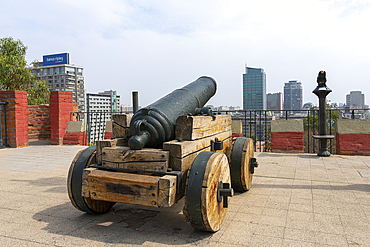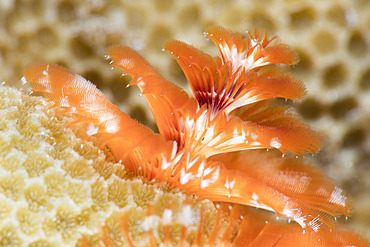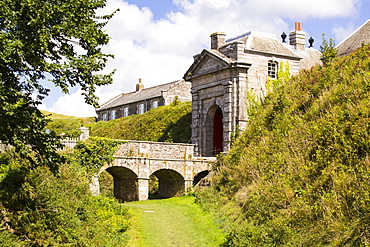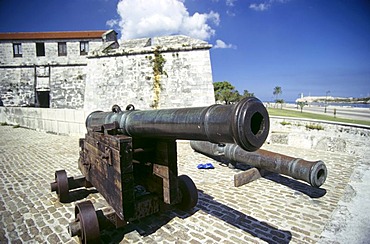Recent searches
Loading...
1278-407 - Budapest, Hungary Buda Castle canon at bastion on winter with melting snow around.
1358-247 - A canon outside the Victualling Warehouse at the disused Royal Naval Dockyard, Bermuda, Atlantic, North America
1359-692 - Canon atop Santa Lucia Hill with Santiago city center in background, Santiago Metropolitan Region, Chile, South America
1359-691 - Canon atop Santa Lucia Hill with Santiago city center in background, Santiago Metropolitan Region, Chile, South America
1350-6353 - Historic Fort King George on Tobago island, Trinidad and Tobago.
1350-4938 - A young nun studying, Sakyadhita Thilashin Nunnery School, Sagaing, near Mandalay, Myanmar, (Burma)
1350-4928 - One of many marble slabs containing text and commentary from the Tripitaka, Kuthodaw Pagoda, Mandalay, Myanmar, (Burma)
1116-51679 - Cannon, Castillo de San Salvador de la Punta, Central; Havana, Cuba
1116-51892 - Hawaiian Green sea turtle (Chelonia mydas) swimming over the coral on the sea floor; Maui, Hawaii, United States of America
1116-51884 - Close-up of a blue goatfish (Parupeneus cyclostomus) showing the two barbels tucked under the chin, used to probe and detect prey; Maui, Hawaii, United States of America
1116-51891 - Hawaiian Green sea turtle (Chelonia mydas) swimming close to the surface with sunburst; Maui, Hawaii, United States of America
1116-51885 - Close-up of the orange colored plumes of a Christmas tree worm (Spirobranchus giganteus) attached to coral; Maui, Hawaii, United States of America
1116-51890 - Close-up detail of a crown of thorns starfish (Acanthaster planci); Maui, Hawaii, United States of America
1116-51678 - Cannon, Castillo de San Salvador de la Punta, Castillo del Morro (background); Central; Havana, Cuba
1350-3027 - Historic Fort King George on Tobago island, Trinidad and Tobago.
1350-3394 - Golden jackal (canis aureus) hunting seals in Cape Cross, Namibia
1350-91 - A telescopic closeup of Comet Lovejoy (C/2014 Q2) on January 19, 2015. I shot this from near Silver City, New Mexico, using a TMB 92mm apo refractor at f/4.4 and using a Canon 6D at ISO 1600 for a stack of 4 x 5 minute exposures. The ion tail is primarily from a single exposure to minimize blurring from the comet's motion relative to the stars. The rest of the image is from the stacked combination to minimize noise.
1350-29 - Omega Centauri globular cluster, with Canon 20Da camera with 4-inch Astro-Physics Traveler apo refractor at f/6 for 4 minutes each at ISO800. Stack of 4 exposures, averaged stacked. Plus short 2-minute exposure for core area. Taken from Queensland, Australia, July 2006.
1350-9 - Taken with 90mm Stowaway AP Refractor, with Borg .85x compressor/flattener for f/5.6. With Canon 20Da camera at ISO 400 for 13 second exposure. on Skywatcher HEQ5 mount tracking at Lunar rate. Exposure kept long to bring out star background. original = 1
1350-25 - The Pleiades star cluster, aka Seven Sisters, or M45, in Taurus. A deep exposure showing the reflection nebulosity which fills the area. This is a stack of 5 x 14 minute exposures with the TMB 92mm apo refractor and Borg 0.85x flattener/reducer at f/4.8 and Canon 5D MkII at ISO 800. Taken from home Oct 9/10, 2013.
1350-56 - This is the rich region in the centre of the constellation of Auriga with the Flaming Star Nebula, IC 405 at right, and the roundish IC 410 at bottom with the cluster NGC 1893. At top left is the star cluster Messier 38, with small NGC 1907 below it. The small nebula at left is IC 417 around the loose cluster Stock 8. The large elongated nebula at top is Sharpless 2-230. The colourful asterism of stars between IC 405 and IC 410 is the Leaping Minnow or Little Fish, aka Mel 31.
1350-28 - The Carina Nebula (aka Eta Carinae) in the southern sky, shot December 11, 2012 from Timor Cottage, Coonabarabran, NSW, Australia. This is a stack of 5 x 12 minute exposures at ISO 400 with the Canon 5D MkII (filter modified) and Astro-Physics 105mm Traveler apo refractor and 6x7 field flattener.
1350-18 - Gum Nebula area of Vela and Puppis. Taken from Atacama Lodge, Chile, March 19, 2010, with modified Canon 5D MkII and Sigma 50mm lens at f/4, for stack of 10 x 6 minute exposures (Mean combined) at ISO 800 plus 2 x 6 minutes with Kenko Softon filter. High contrast boost and Selective Colour adjustments to bring out nebulocity while retaining neutral sky.
1350-4 - 9-day-old gibbous Moon, taken April 23, 2010, with Astro-Physics 130mm apo refractor, plus 2x Barlow for f/12 and 1600mm focal length. Canon 7D camera at ISO 100. Seeing poor -- this was the sharpest of the lot.
1350-96 - The partial eclipse of the Sun, October 23, 2014, as seen from Jasper, Alberta, in this case shot through thin cloud but that makes for a more interesting photo than one in a clear sky. This is still shot through a mylar filter, on the front of a 66mm f/6 apo refractor using the Canon 60Da for 1/25 sec exposure at ISO 100. The colours are natural, with the mylar filter providing a neutral 'white light' image. With the Sun dimmed a lot by cloud, the longer exposure allowed picking up light and colours in the surrounding clouds.
1350-19 - Harvest Moon, Sept. 27, 2004, taken from near home. With Canon Digital Rebel 300D, with 20mm lens at f/13 and 1/2 sec exposure at ISO100. Minimal processing to increase contrast but Moon image is not a fake -- the balance between sky and Moon was perfect for recording Moon detail and ground without over or underexposing either.
1350-97 - The partial eclipse of the Sun, October 23, 2014, as seen from Jasper, Alberta, shot under clear skies through a mylar filter, on the front of a 66mm f/6 apo refractor using the Canon 60Da for 1/8000 (!) sec exposure at ISO 100. The colours are natural, with the mylar filter providing a neutral 'white light' image. The big sunspot on the Sun that day is just disappearing behind the Moon's limb. The mylar filter gave a white Sun, its natural colour, but I have tinted the Sun's disk yellow for a more pleasing view that is not just white Sun/black sky.
1350-36 - Sunset clouds and colours on December 3, 2013 from Massai Point, Chiricahua National Monument, Arizona. This is a 7-frame HDR High Dynamic Range stack to compress the high contrast from the bright sky and dark foreground into one image. Combined with Photomatix Pro. Taken with the Canon 5D MkIi and Canon 24mm lens at f/8. From images _MG_6996_6997_6998_6999_7000_7001_7002 taken at 2/3rd stop increments.
1350-33 - Sagittarius and Scorpius in diagonal framing, with Milky Way from Ara to Serpens. Taken with 50mm Sigma lens at f/4 and Canon 5D MkII at ISO 800 for stack of just 2 frames each at 6 minutes. Cloud prevented more exposures. Taken from Atacama Lodge, San Pedro de Atacama, Chile.
1350-21 - M33, the Triangulum Spiral, a dwarf spiral in the Local Group. This is a 6-image stack of 12-minute exposures with the Canon 7D at ISO 800 on the 130mm Astro-Physics apo refractor at f/6 on AP 600E mount and SBIG SG4 autoguider. Poor seeing bloated star images somewhat.
1350-78 - A session shooting deep-sky objects in the rural backyard in Alberta, on a chilly November night, November 8, 2018. I was using the Celestron 8 HD tube assembly on the Astro-Physics Mach One mount, and was shooting Messier 27 with the Canon 6 D MkII. I shot this image with the Sony a7III and Venus Optics 15mm lens at f/2 focused on the foreground.
1350-41 - One of the 27 antennas of the Very Large Array (VLA) radio telescope complex in New Mexico (with others in the distance at lower right) illuminated by moonlight, on December 13, 2013, peak night for the Geminid meteor shower. A single exposure of 30 seconds with the Rokinon 14mm lens at f/2.8 and Canon 5D MkII at ISO 800. Orion is rising a lower centre. The Moon is the bright object at upper right. The Pleiades and Hyades are above centre.
1350-60 - A stack of 25 x 2-minute exposures with Canon 200mm f/2.8 lens at f/4 and at ISO 1600 with Canon 6D.
1350-39 - Astronomer Vance Petriew at the eyepiece of his 20-inch Dobsonian reflector telescope, at the 2012 Saskatchewan Summer Star Party in Cypress Hills, SK. This is a single 20 second exposure with the Canon 5DMkII at ISO 4000, and 24mm Canon L-series lens at f/2. A faint aurora adds the horizon colours. The photo was taken on the occasion of the second return of Comet Petriew 185/P since its discovery 11 years earlier in 2001 at this very same location.
1350-15 - Comet Hartley 2 near the Pacman Nebula, NGC 281, in Cassiopeia. Stack of 4 x 6 minute exposures at ISO 1600 with Canon 5D MkII on A&M 105mm apo refractor at f/4.8 with Borg reducer/flattener. Bright star is Alpha Cas, Schedar. Autoguided with Celestron NexGuide autoguider. However, image of comet core is from only one exposure to minimize trailing from this fast-moving comet.
1350-67 - A demo image with the Orion 80mm CF Apo and Celestron AVX mount, with 3 x 8 minute and 3 x 6 minutes, at ISO 1600 with Canon 6D MkII plus shorter 3 x 2 minute and 3 x 1 minute exposures blended in with luminosity masks. Guided with the Orion Starshoot and Orion finderscope, using PHD2, with a lot of wild excursions in the guiding.
1350-17 - Nebulosity in the heart of Cygnus the Swan, including the North America Nebula and Pelican Nebula at left (NGC 7000 and IC 5070) and Gamma Cygni complex at right (IC 1318). The Crescent Nebula (NGC 6888) is at lower right. This is a stack of 5 x 4 minute exposures at f/2 with the 135mm lens and modified Canon 5D MkII at ISO 800, plus another three similar exposure images but taken thru the Kenko Softon filter for the star glows. Taken from home Sept 10, 2013.
1350-26 - Sunset twilight colours and the waxing gibbous Moon over the Chiricahua Mountains in southeast Arizona, south of Willcox. Taken December 15, 2013 on Highway 186. Taken with the 24mm lens and Canon 5D MkII. Some dark crepuscular rays are visible converging to the anti-solar point.
1350-40 - The Very Large Array (VLA) radio telescope in New Mexico, at sunset, March 17, 2013, with the Earth shadow rising at right and the pink Belt of Venus along the eastern horizon. This is a 2-section panorama, hand-held, with the 14mm lens and Canon 60Da camera.
1350-82 - The area of the Rosette Nebula (bottom) and Christmas Tree Cluster (top) in Monoceros with the Fornax Lightrack tracker and 200mm lens + Canon 5D MkII. The nebulosity at top includes the Cone Nebula.
1350-37 - Total eclipse of the Moon, December 20/21, 2010, taken from home with 130mm AP apo refractor at f/6 and Canon 7D at ISO 400. An HDR composite of 9 images from 1/125 second to 2 seconds, composited in Photoshop CS5. Vibrancy increased to show bring out the colour variations across the shadow and at the edge of the shadow. Taken at about 12:21 am MST on Dec 21, about 20 minutes before totality began, during the partial phase.
1350-123 - NGC 7000, the North America Nebula, with the Pelican Nebula, IC 5067, at right, in Cygnus, taken from home November 21, 2016 as part of testing of the Explore Scientific FCD100 102mm apo refractor. This is a stack of 5 x 6-minute exposures at f/7 with the ES field flattener, and at ISO 1600 with the filter-modified Canon 5D MkII. Star diffraction spikes added with AstronomyTools actions.
1350-20 - M31 Andromeda Galaxy, with TMB 92mm apo refractor and Borg 0.85x reducer/flattener for f/4.8 and Canon 20Da camera at ISO400 for 2 x 15 minute exposures. North is at bottom, south at top (better balance with this framing)
1350-57 - Orion and the winter stars and constellations rising in the light of a first quarter Moon on December 3, 2019. The vertical format sweeps up the Milky Way.
1350-92 - Comet Lovejoy (C/2104 Q2) on the night of Dec. 27/28, 2014, as it was approaching the globular cluster M79 at upper right, in Lepus. This is a stack of 5 x 3 minute exposures at ISO 2500 with the Canon 5D MkII and TMB 92mm refractor at f/4.4. Taken from near Silver City, New Mexico.
1350-38 - Total eclipse of the Moon, December 20/21, 2010, taken from home with 130mm AP apo refractor at f/6 and Canon 7D at ISO 400 for 4 seconds, single exposure, shortly after totality began.
1350-16 - Comet Holmes, 17P, taken Nov 1, 2007 on excellent night. Taken with A&M 105mm apo refractor at f/5 with Borg 0.85x compressor/field flattener on SkyWatcher HEQ5 mount. Canon 20Da camera at ISO400. Composite of 4 min, 2min, 1min, 30sec, 15sec, and 7 sec exposures, each exposure being a stack of 3 to 4 identical exposures. Registered and stacked in Photoshop (HDR mode did not produce usable result, so manually composited with sucessively smaller masks to reveal short exposure content around nucleus. Contrast exaggerated with Curves to bring out very faint tail structure. North up, so tail to the S and SW.Nucleus is dot at upper left of inner coma, other star in inner coma at right is a field star
1349-182 - Mars Science Laboratory Rover Curiosity Lifts-Off
1113-103501 - Couple sitting on porch of holiday bungalow at night, Canon Lodge, Gondwana Canon Park, Fish River Canyon, Namibia
1167-2328 - Cannon at Fort Gustaf, view to Fort Oscar, Gustavia, St. Barthelemy (St. Barts) (St. Barth), West Indies, Caribbean, Central America
29-5550 - Nakhl Fort on northern edge of Jabal Akhdar, Oman, Middle East
1245-1898 - San Pedro de la Roca Castle, UNESCO World Heritage Site, Santiago de Cuba, Santiago de Cuba Province, Cuba, West Indies, Caribbean, Central America
1245-1896 - San Pedro de la Roca Castle, UNESCO World Heritage Site, Santiago de Cuba, Santiago de Cuba Province, Cuba, West Indies, Caribbean, Central America
1167-2258 - Citadel ramparts, Brimstone Hill Fortress National Park, UNESCO World Heritage Site, St. Kitts, St. Kitts and Nevis, Leeward Islands, West Indies, Caribbean, Central America
1167-2257 - Cannons, royal insignia, Brimstone Hill Fortress National Park, UNESCO World Heritage Site, St. Kitts and Nevis, Leeward Islands, West Indies, Caribbean, Central America
1167-2255 - Western Place of Arms, Brimstone Hill Fortress National Park, UNESCO World Heritage Site, St. Kitts and Nevis, Leeward Islands, West Indies, Caribbean, Central America
1167-2256 - Citadel cannons, Brimstone Hill Fortress National Park, UNESCO World Heritage Site, St. Kitts, St. Kitts and Nevis, Leeward Islands, West Indies, Caribbean, Central America
1297-977 - Prince's Palace of Monaco in Monaco, Cote d'Azur, French Riviera, Mediterranean, France, Europe
1207-605 - Elephants walking through the entrance gate at Amer (Amber) Palace and Fort, UNESCO World Heritage Site, Amer, Jaipur, Rajasthan, India, Asia
1226-783 - Jacob's Barracks, Old Town, UNESCO World Heritage Site, Riga, Latvia, Europe
857-95143 - Long exposure shot of Reynisfjara beach at sunrise, Iceland
857-95142 - Scenic view of Reynisfjara beach at sunrise, Iceland
1276-241 - Beverly Canon Gardens, Beverly Hills, Los Angeles, California, United States of America, North America
1276-242 - Beverly Canon Gardens, Beverly Hills, Los Angeles, California, United States of America, North America
1278-65 - Ovo Castle fortifications with canons at Castel dell Ovo islet fortress and city view at the Gulf of Napoli, Naples, Campania, Italy, Europe
1132-357 - The Tsar Canon, inside the Kremlin, Moscow, Russia, Europe
844-9448 - View over Hvar from Spanish Fortress, Hvar Island, Dalmatia, Croatia, Europe
844-9446 - View over Hvar from Spanish Fortress, Hvar Island, Dalmatia, Croatia, Europe
1160-2924 - Castillo de la Virgen, Santa Cruz de la Palma, La Palma, Canary Islands, Spain, Europe
1160-2923 - Castillo de la Virgen, Santa Cruz de la Palma, La Palma, Canary Islands, Spain, Atlantic, Europe
1176-379 - Kuthodaw pagoda - stupas housing the world's largest book, consisting of 729 large marble tablets with the Tipitaka Pali canon, Mandalay, Myanmar (Burma), Southeast Asia
1176-378 - Kuthodaw pagoda - stupas housing the world's largest book, consisting of 729 large marble tablets with the Tipitaka Pali canon, Mandalay, Myanmar (Burma), Southeast Asia
1178-14527 - Cannon on Castle of Sao Jorge, Lisbon, Portugal
1178-11531 - USA, Pennsylvania, Gettysburg, Little Round Top, historical canon from American Civil War
911-10109 - Henry VIII's Fort at Pendennis Castle, a fortress that has protected Cornwall from invasion for 450 years, Falmouth, UK.
911-10106 - Pendennis Castle, a fortress that has protected Cornwall from invasion for 450 years, Falmouth, UK.
1167-714 - Captured Turkish cannon, Union Flag at half mast on Old Admiralty Building, Horse Guards Parade, Whitehall, London, England, United Kingdom, Europe
1167-621 - Cannons and green hills, Brimstone Hill Fortress, UNESCO World Heritage Site, St. Kitts, St. Kitts and Nevis, West Indies, Caribbean, Central America
1167-620 - Cannon points towards the sea, with St. Eustatius in the distance, Brimstone Hill Fortress, UNESCO World Heritage Site, St. Kitts, St. Kitts and Nevis, West Indies, Caribbean, Central America
1167-622 - Cannon and green hills, Brimstone Hill Fortress, UNESCO World Heritage Site, St. Kitts, St. Kitts and Nevis, West Indies, Caribbean, Central America
800-2141 - Cannons at Fine Arts Museum, Citadel, Hue, Thua Thien-Hue, Vietnam, Indochina, Southeast Asia, Asia
816-6578 - Old cannon in a park in Akaroa, Banks Peninsula, Canterbury, South Island, New Zealand, Pacific
800-1996 - Disappearing gun and Auckland skyline, North Head Historic Reserve, Devonport, Auckland, North Island, New Zealand, Pacific
800-2067 - Auckland Museum, Auckland, North Island, New Zealand, Pacific
832-331985 - Canon near the hotel Chateau Guetsch, Lucerne, Switzerland
832-330002 - National museum in the old part of town, Havana, Cuba
832-330003 - National museum in the old part of town, Havana, Cuba
832-321677 - Duernstein, religious foundation and church steeple, Wachau, Lower Austria, Austria
832-313328 - City Palace of the Maharajah, Jaipur, Rajasthan, India
832-304401 - Old canon aimed in the direction of Cerro Santa Lucia Park and modern high-rises, Santiago de Chile, Chile, South America
832-295416 - Bastion of Defence, Sevastopol, Crimea, Ukraine, South-Easteurope, Europe,
832-285456 - Glen Canon dam, Lake Powell, near Page, Arizona, USA
844-2090 - Museum, Nelson's Dockyard, Antigua, Leeward Islands, West Indies, Caribbean, Central America
844-2109 - Bakery, Admiral's House and Dockyard Museum, Nelson's Dockyard, Antigua, Leeward Islands, West Indies, Caribbean, Central America
844-2108 - Nelson's Dockyard, Antigua, Leeward Islands, West Indies, Caribbean, Central America
844-2101 - Copper and Lumber Store, Nelson's Dockyard, Antigua, Leeward Islands, West Indies, Caribbean, Central America
832-277119 - Passau Lower Bavaria Germany from the southern tower of the cathedral to Domplatz with canon's houses and green market
832-276989 - Ingolstadt Upper Bavaria Germany guns in front of the new castle Neues Schloss
832-277082 - Eberndorf Carinthia Austria former Augustinian canon monastery church



































































































